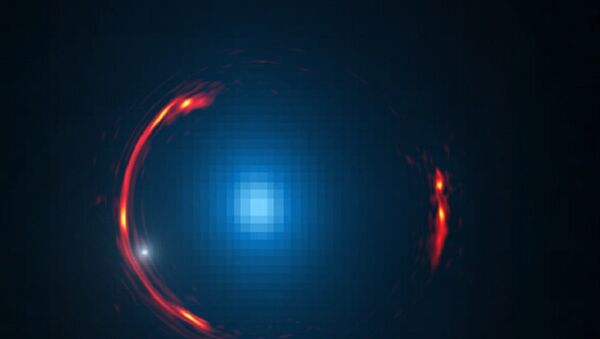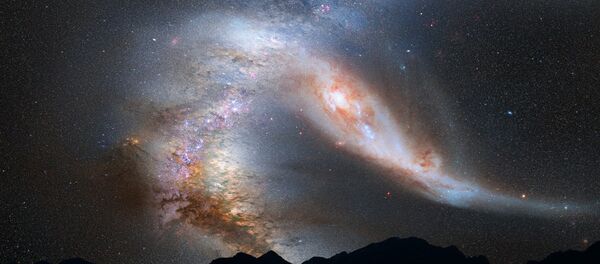Deep inside the clouds of gas and dust surrounding the smallest galaxies, dark matter could form cold droplets called “Bose stars,” according to the results of a study published in the latest issue of Physical Review Letters.
Even though the very nature of dark matter is still a mystery to science, let alone evidence of invisible “stars,” a new mathematical model, proposed by a team of Russian researchers, suggests that dark matter might have some strange interactions.
"In our work, we simulated the motion of a quantum gas of light, gravitationally interacting dark matter particles," physicist Dmitry Levkov from the Russian Academy of Sciences’ Institute for Nuclear Research said.
The mysterious matter, making up around 80 percent of the mass in the universe, is still impossible to detect and doesn't interact with normal matter through the usual channels, such as by exchanging photons via the electromagnetic field.
But dark matter particles don’t seem to interact with each other or with normal matter except through the force of gravity — these dark matter particles can’t shed heat and become more densely concentrated.
The only sign of dark matter being out there is the gravitational pull that has already been studied in detail, giving scientists much-needed insight into its nature.
This gives rise to the bizarre approximation of a star, powered by dark matter destroying itself, instead of the fusion process which heats our own star.
It can also be assumed that the speed of the stuff making up dark matter is slow moving enough to not shoot off into space.
One theory says that this sluggish dark matter could be a particle called an axion, a photon like boson.
Another option is fuzzy dark matter — yet another type of boson, invented to solve an astrophysical dilemma about the distribution of dark matter in galactic haloes.
The authors claim the model is the first to look at the kinetics of such a dark matter Bose-Einstein condensate – anonymous rallies of quantum particles – actually forming.
When the temperature drops to just above absolute zero, particles quit mixing and lose their individual identities to look almost the same.
"After a very long period, 100,000 times longer than the time needed for a particle to cross the simulation volume, the particles spontaneously formed a condensate, which immediately shaped itself into a spherical droplet, a Bose star, under the effect of gravity," Dmitry Levkov said.
As a result, a cloud of “dark” bosons becomes the same particle. The scientists have determined that this cloud can pull together under gravitational effects to form a globe – a Bose “star.”
READ MORE: Mystery of Dark Matter: What the Detector in Italy Has Actually Picked Up
"The next obvious step is to predict the number of the Bose stars in the Universe and calculate their mass in models with light dark matter," Levkov noted.
Scientists hope that someday they will finally be able to understand the fundamental nature of this ghostly mass to find some fascinating new structures hiding among the stars.



